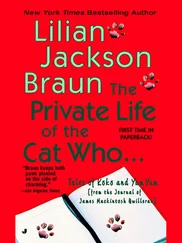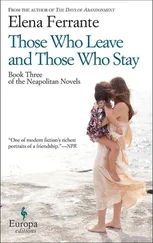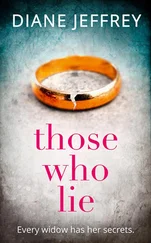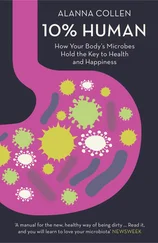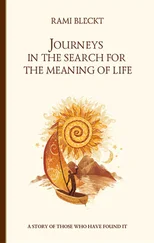In the early days of Cedar Hill when the Welsh, Scotch, and Irish immigrants worked alongside the Delaware and Hopewell Indians to establish safe shipping lanes through places such as Black Hand Gorge, the Narrows, and Buckeye Lake, a devastating epidemic of cholera swept through the county. People died so fast and in such great numbers that corpses had to be collected in express wagons every eight hours. People were dying faster than healthy men could be found to bury them. But the “…plague” (as it was referred to in the journals of the time) passed, the town began to rebuild its citizenship (many widows and widowers moving beyond the barriers of their “own clans and communities” to marry and procreate), and later, in 1803, Cedar Hill Cemetery was established by the town’s remaining founders as a place to permanently inter those who had died during the epidemic. Even though bodies were scattered for nearly seventy-five miles in all directions, groups of volunteers were assembled whose duty it was to locate and identify as many of the dead as possible, bring them back to Cedar Hill, and ensure each was given a “…burial befitting one of a good Christian community.” Since most of the bodies had been buried with some sort of marker, locating them wasn’t too difficult, nor, surprisingly, was identifying them, despite the ravages of time and disease on the bodies; every “…Hill citizen of Anglo descent” had been buried with a small Bible whose inside cover bore the name of its possessor, as well as those of his or her immediate family. Once found and returned, the bodies were placed in the cemetery according to family or clan, and over the decades it remained that way, albeit by unspoken agreement; members of families directly descended from Cedar Hill’s founding fathers were buried in or as near as possible to the plats where their ancestors slept. But such were the ways of nearly two hundred years ago that a majority of people in Cedar Hill (both the cemetery and the town) were now related by ancestral blood; some within three or less generations, others quite distantly.
The graves of Marian’s parents were located in front of a small abandoned church on the cemetery grounds. The long-forgotten architect who’d designed the church had, like Marian’s dad, been an admirer of Antonio Gaudi’s Sagrada Familia Cathedral in Barcelona. She thought of Gaudi now because he’d been something of a hero to her father, a man who laid bricks, cut lumber, and balanced beams for a living. Her parents had married on Hallowe’en nearly forty years ago (hence that day being the Big Celebration Day in the Quinlan household), then honeymooned in Barcelona where her father was awestruck by Gaudi’s masterpiece: She could still recall the wonder in his face whenever he spoke of the experience, shaking his head in amazement that the plans for the cathedral’s construction were so vast, complex, and precise it would take hundreds of years to complete.
“ I wish I had that kind of talent,” he’d said . “To be able to create something like that, something that you don’t just build, but something your soul goes into, something that will go on being created hundreds of years after you’re gone, so you’ll never be forgotten.”
“ You know,” said Mom, “in that pamphlet they were giving out, it said that Gaudi was partly inspired by a quilt his mother had made when he was a child. I always wanted to get back to that quilt I was working on.”
Dad laughed. “Well, then; you got your dream project and I got mine.”
A soft rustling of leaves somewhere behind told Marian that yet another band of demons and wizards and ghoulies was making its way through, but she did not turn to look; her gaze was still fixed on the crumbling church before her. Dad had always been fascinated by the church’s obvious, though less extravagant, Gaudi influence, disregarding that the structure was merely the echo of another man’s genius; from the blue marble inlay to the ominous gargoyles to the reproduction of the Virgin Mary over the rotting and sealed oak doors, the building seemed to apologize for what it wasn’t rather than boast of its own virtues. Over the years sections of the front and side walls had collapsed, revealing parts of the interior. From where Marian stood she see exposed portions of both the belfry and the organ loft. Her dad once put in a bid to renovate this church, seeing it as his one and only chance to leave behind something to equal the glory of the Sagrada Familia — a wild and improbable dream, to be sure, but one that he’d nurtured for over half his life. It helped him to pass the long nights when his back pain kept him awake and the bills outweighed the bank balance— both conditions being part and parcel of an independent contractor’s chosen occupation. The city later decided that renovating the church wasn’t as important as building a new shopping mall and so dropped the project. Still, her father had kept the family gravesites near the structure; if he couldn’t rest near his greatest triumph, he would rest near the symbol of what might have been.
Marian stared at the decaying church and sighed. Even in death her parents had to settle for second best. Their tombstones were side by side, with a third spot reserved— at his own request— for Alan.
There was no space for Marian; they’d always known she’d be the one to break away completely, to build a new life far away from this sad and tired little town that liked to call itself a city.
She hoped that her dad knew how hard she’d tried ( but not all that hard , said something in the back of her mind) to get here in time.
Tried and failed.
As the beggars’ retreating footsteps crunched through the dried leaves, Marian knelt down and placed one rose on each of her parents’ graves, whispering a prayer taught to her by her mother at a time when the Mass was still spoken in Latin, the language of worship Mom had always preferred:
“ Intra tua vulnera aescode me, ” she said, hoping she was remembering it correctly.
She heard the approaching footsteps but paid them no mind.
“ Ne permittas me separari a te. Ab hoste maligno defende me. In hora mortis meae voca me; Et jub me venire ad te, Ut cum Sanctis tuis laudem —” She saw a shadow slowly rise up behind her to stretch over the graves. Spindly, almost twig-like arms and hands; a slender, tubular trunk; and a large, rounded head with its stem jutting upward. She smiled and felt a tear slip from her eye.
For a moment, kneeling there under the entwined shadows, she was six years old again, listening as Mom read to her from L. Frank Baum’s The Marvelous Land of Oz , describing how Tip came to build Jack Pumpkinhead who would be his partner as they went in search of the Tin Woodsman and the Scarecrow. Jack Pumpkinhead, with his round eyes, three-cornered nose, and mouth like a crescent moon, living under the watchful gaze of Mombi the Sorceress. Jack had been Marian’s imaginary friend through most of her childhood, always next to her during math tests at school, sitting by her bed at night after the Friday chiller movies to guard against the creatures she feared were waiting under the bed or crouching in the closet. Only she could see him then.
Just like now.
She was so pleased to have him with her again she almost couldn’t finish the prayer.
“ In sa ... sa ... ”
“ In saecula saeculorum ,” said Jack Pumpkinhead behind her. “ Amen. ” “Amen,” echoed Marian. Something brushed against her shoulder, then rested there. A soft whisper, full of October melancholy: “Let’s sing our special song.”
She reached up and, not turning to look, touched the twig-fingers of Jack’s hand. She knew his being here was just a bit of childhood whimsy she had never been able to discard (after all, a good actress was supposed to be able to recall feelings and experiences to enrich her performances), but, still, it amazed her how easily she was able to slip back into the Marian of childhood and find she still fit.
Читать дальше

